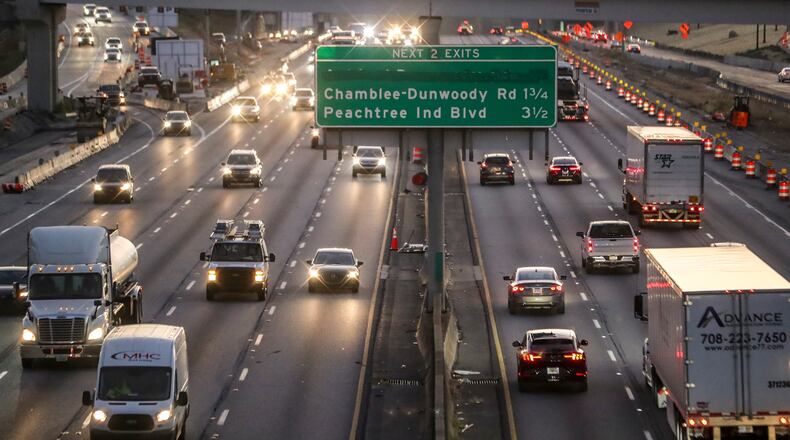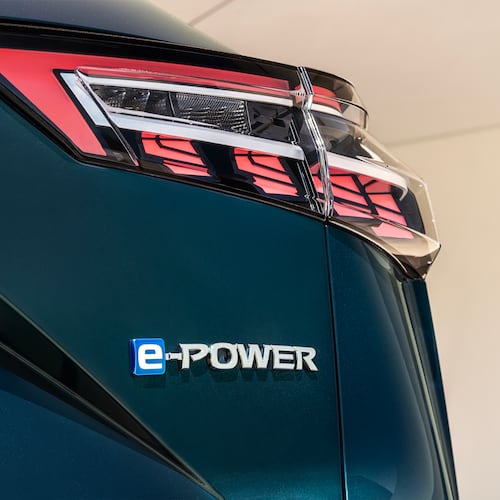Wild weather, reckless driving and a spike in car repair costs are just some of the reasons car insurance premiums jumped last year.
According to a forecast from the Insurance Information Institute, an industry trade group, drivers can expect another 7% increase in premiums in 2025.
Bankrate says full coverage car insurance in the U.S. increased 26% last year to an average of $2,543. The average annual premium in Georgia jumped to $2,610 — $67 higher than the national average. In metro Atlanta, premiums averaged $2,780 per year. Full coverage insures your vehicle for accidents, including forces of nature.
Rising car insurance costs are a crushing blow in a metro area where many depend on their vehicles to get around as consumers grapple with lingering inflation, including higher car prices.
What is driving up car insurance costs?
Several forces have converged to push up car insurance rates. Insurance Information Institute spokesman Mark Friedlander said the industry is still reeling from its worst underwriting performance year in decades. In 2022, insurers paid $1.12 in claims and expenses for every dollar collected in premiums. Here’s what else is at play.
Catastrophic losses: Friedlander said insurance losses from events like hurricanes, flooding and wildfires could surpass $100 billion in 2024, the third time losses have hit that mark since 2020. He said losses were at $80 billion through Sept. 30.
“This was before Hurricane Milton struck,” he said. Milton walloped Florida in October. About two weeks before Milton, Hurricane Helene carved a path of destruction across the Southeast, barreling through Florida on its march north to Georgia, North Carolina and other states.
Credit: John Spink
Credit: John Spink
Friedlander added, “In addition to five U.S. land-falling hurricanes in 2024, other weather and natural disaster events included severe convective storms (tornado and hail damage), floods, wildfires and droughts. The 21st-century average is $79 billion in insured losses annually.”
2025 has already started with the devastating wildfires in California.
Economic factors: Economic forces are also at play. The COVID-19 pandemic caused car and parts shortages, pushing up prices. New car prices remain $10,000 more than pre-pandemic. While plenty of new vehicles now exist, used vehicles are a sore spot. Those disruptions during the pandemic in 2021 and 2022 meant that automakers built about 8 million fewer cars, which could keep used car prices higher through 2026.
High-tech cars: Cars are smarter than ever. They can park themselves, help keep us in lanes, and sense rain or snow on the windshield, among other high-tech features. With all the technology in vehicles today, they cost more to repair (or replace) after an accident.
Credit: Zachary Hansen
Credit: Zachary Hansen
For example, Safelite shows replacing a windshield in a 2015 Toyota Camry costs approximately between $400 and $800. Replacing the windshield of a 2025 Toyota Camry equipped with newer technology like a head-up display, soundproofing, a rain/light sensor, a lane departure warning system, lane tracing assist, road sign assist and more can cost between $700 and $1,100. It will require more time to install and calibrate these features.
Reckless driving and uninsured drivers: The U.S. Department of Transportation reported that traffic fatalities rose to more than an estimated 41,000 deaths in 2023, up from 36,000 in 2018. While fatalities were down during the first half of 2024, insurers still face increasing numbers of claims and litigation for accidental deaths.
Friedlander said the number of uninsured drivers in Georgia is 18.1%, the seventh highest in the nation.
“Uninsured motorists make roads less safe and coverage more expensive for all drivers who follow state regulations that require auto insurance,” he said.
More increases this year
The Insurance Institute expects drivers will see 7% increase in car insurance premiums this year, including a 3.8% hike in car repair and labor costs. Though premiums are expected to be up again this year, the rate of increase in premiums is actually down from 12% last year and 14% from 2023.
“Other factors that will continue to impact the cost of coverage in the Atlanta area this year include more technologically advanced vehicles costing more to repair; distracted driving, such as texting while driving, leading to more accidents; a continued spike in litigated auto accident claims as billboard attorneys aggressively market their services to consumers to file suit following a crash; and rising health care costs to treat accident victims,” Friedlander said.
He added that severe weather events, vehicle theft and vandalism will also impact coverage costs (down to the ZIP code level) in metro Atlanta communities.
Tips for lowering your car insurance premiums
Drivers can lower premiums in several ways this year. Review each line item in your policy and shop around for better rates. Also, you may get a discount for maintaining an excellent credit score. Here’s a list of other discounts for which you may qualify:
- Bundling car and home insurance
- Insuring multiple cars with the same company
- Driving fewer miles per year
- Participating in employer discount programs
- Achieving good grades
- Notifying your company that a student driver is now away at school
- Attending a defensive driving course
- Increasing deductible
- Paying electronically and up-front
Source: Bankrate
Renee DeGross Valdes is a veteran reporter and editor who writes about car advice for Kelley Blue Book and Autotrader. She previously worked for CNN and The Atlanta Journal-Constitution.
The Steering Column is a weekly consumer auto column from Cox Automotive. Cox Automotive and The Atlanta Journal-Constitution are owned by parent company Atlanta-based Cox Enterprises.
About the Author
Keep Reading
The Latest
Featured





